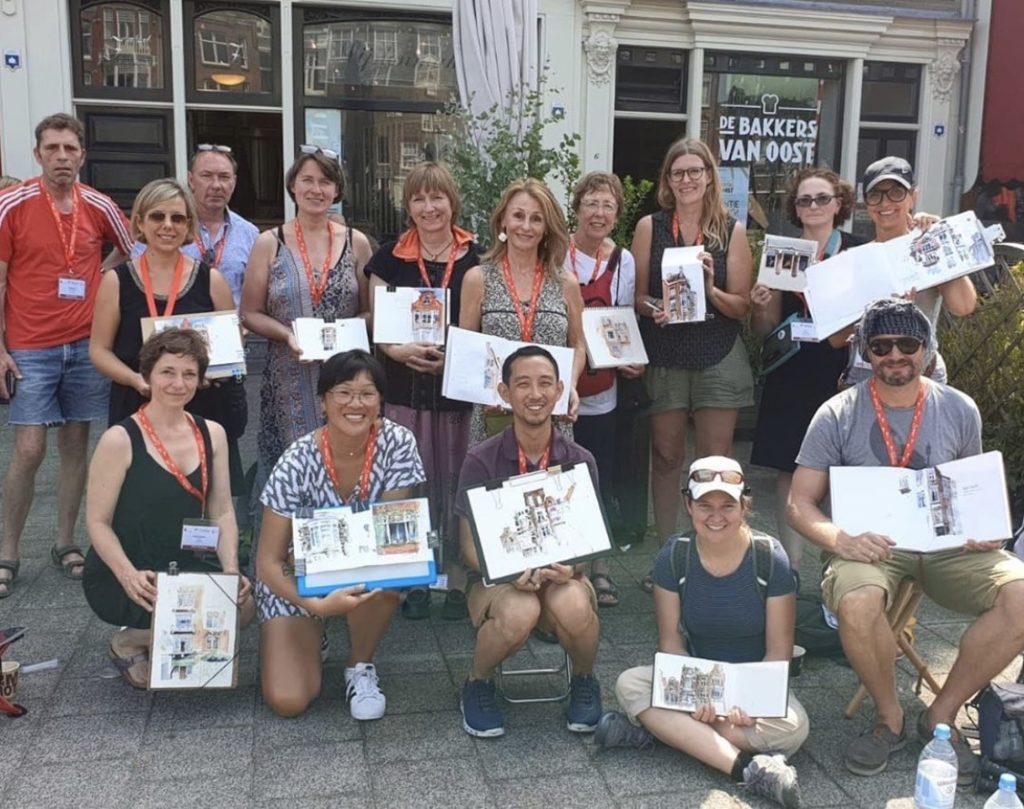
Hi everybody!
I just came home from the 10th Urbansketchers symposium in Amsterdam, full of creative energy!
I’m fully boosted from these over 1000 happy creatives from 47 different countries!! I had some great workshops from which I want to share some “takeaways”.
To warm up, I started with Ch’ng Kiah Kiean. He came to Antwerp the weekend before the symposium 😀
He’s is a generous teacher. His specialty is sketching with dry twigs and Chinese ink.
First he brought for all of us participants our new drawing tools: we made our twigs and ink pots with gauze. We also had a hard brush and recipient with sponge and ink to make the shadowing. It wasn’t my first workshop with him. I find the twigs hightly liberating!
Drawing with such unusual and new tools is the perfect creativity boost. The perfect way to get out of your comfort zone and train new drawing muscles and a whole new way of seeing and putting what you see to the paper. How do you look at the objects to draw? And how do you draw?
The most important change that happened to me was that I got rid of FEAR : fear of making a bad drawing, fear of judgment of others, fear of not being able to draw this or that, fear of missing out the important details, fear of making a fool of myself…
I’ll post a video about sketching with twigs in one of my next blogposts!
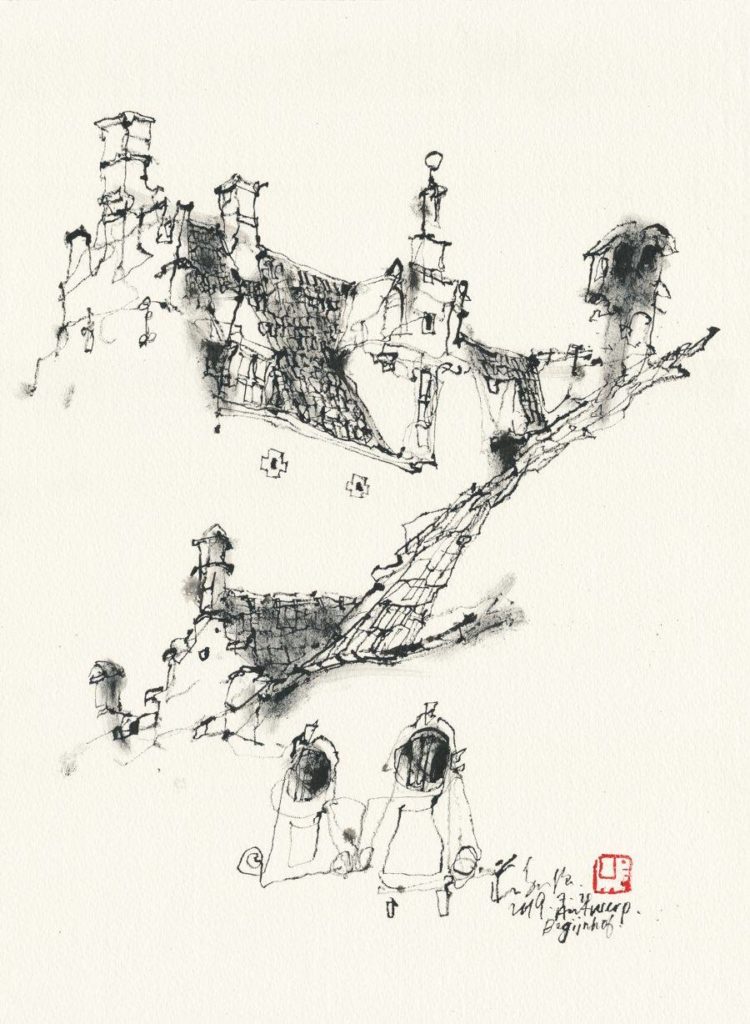
On the first symposium day I did a workshop with Paul Wang.
It was a wonderful experience: He makes great sketches with pencil and watercolour, full of splashy colours. He made a special workshop about windows. What’s a good tip about the windows in your drawing is to make them different from each other, so you don’t end up wit a boring repetition! Make anomalies and VARIATION! And don’t draw everything with the pencil. Paint some without line drawing to make a variation.
A remark about the subject: chose something with life in it, even with some mess: like a balcony full of laundry and clutter. Clutter means human activity and is more interesting then something neat and beautiful. Make the clutter your focus point.
Don’t forget the shadows. The shadows give life to your painting. After that you can paint the rest.
And also important: If you’re afraid of the white cleanness of your paper: destroy it by splashing watercolour on it from the beginning! It really helps! Use a big brush with natural hair. Don’t use a synthetic brush if you want beautiful natural splashes .
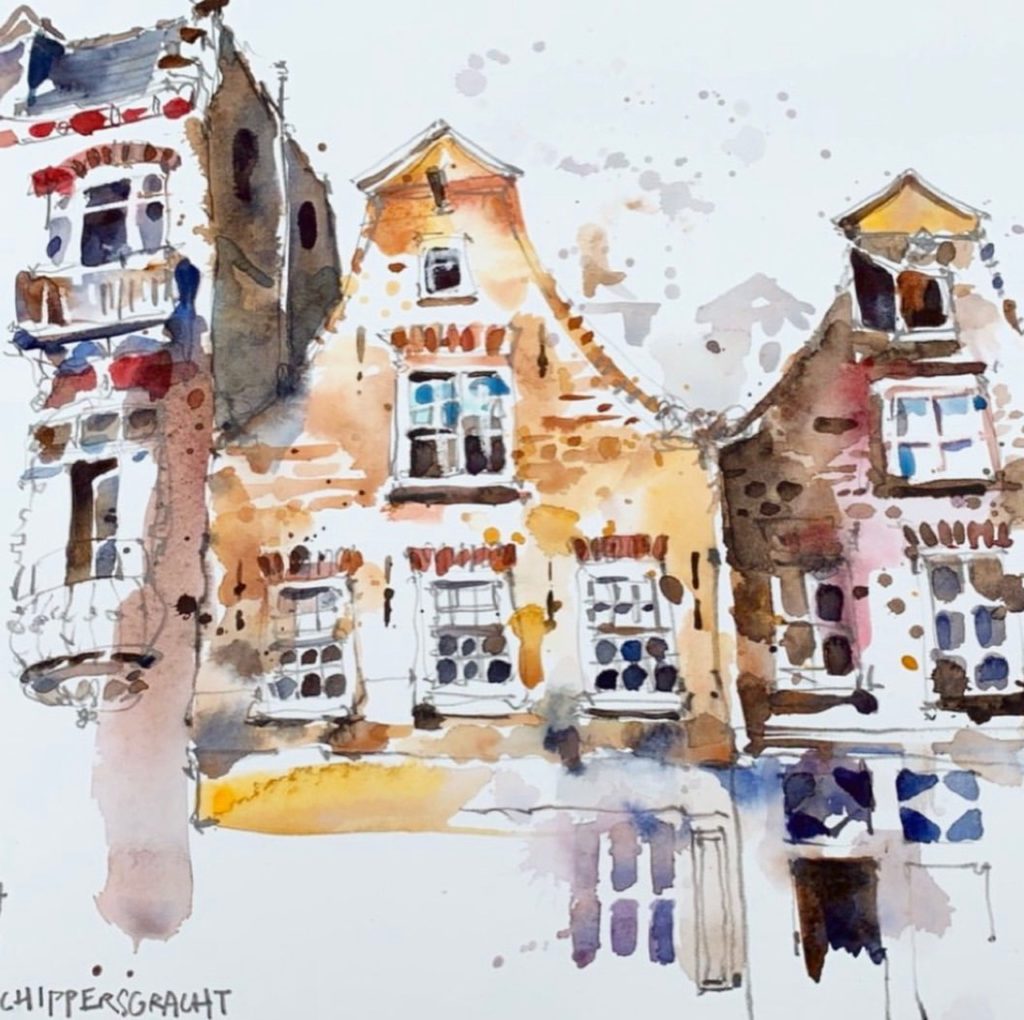
After that I had a wonderful workshop with Pat Southern Pearce.
That was also an eye opener for me, because often when I choose to draw something, I don’t immediately think about what I want to say. Instead I think “will this make a beautiful drawing?” Pat is “writing with pictures”, and makes the most beautiful lettering. We could use all her art supplies. That reminds me that if you think about what you want to say, of course your drawing will be more interesting. What’s the purpose of your drawing? Here are some tips:
- Focus on specificity: look closely, pay attention to details, gesture, movement and mood.
- Choose the colors according to your mood. It doesn’t all have to be really there in reality…
- Aim to create a drawing that exhibits originality, one that shows your view and opinion. there are many ways to draw well. What’s yours?
- Add some text that reflect memories of the place.
- Try papers of different colors
- Aim for qualities of freshness, liveliness and humanity: drawings are created by humans and not by machines, and are made from lines, marks, smudges and washes. Don’t be “a camera”: don’t draw everything with photographic precision.
- Explore while drawing and aim to show something new. every drawing is a new drawing and a new experience.
- FOCUS: play up what’s important for you and down what’s not. You’re a translator and not a copier of what’s in front of you. Remember that you’re not a photographer. We don’t see everything when we look at something. We focus.
Veronica Lawlor also gave an interesting workshop, reminding us of the importance of thumbnails and of close observation.
Then in the end of the workshop, after some 30 or something thumbnails: choosing what we want to say really and emphasize that in some way, by exaggerating a shape, or by adding specific colours to some spot in the drawing.
Veronica does great reportage drawing and always thinks of the message she wants to show!
Next year the symposium will be in April, in Hong Kong!
Oh Yes and most important: PLAY !
And Mistakes are your babies: you should LOVE them!
Have fun when sketching! I used to struggle too much and make a stress out of a ruined drawing. Often we struggle too much and make it hard work. We tend to forget to let go and SLOW DOWN and then forget we do it for fun… So now I always choose my workshops according to what will give me most fun.
Are you playing enough? How does it feel for your creativity? When are you most free to play?
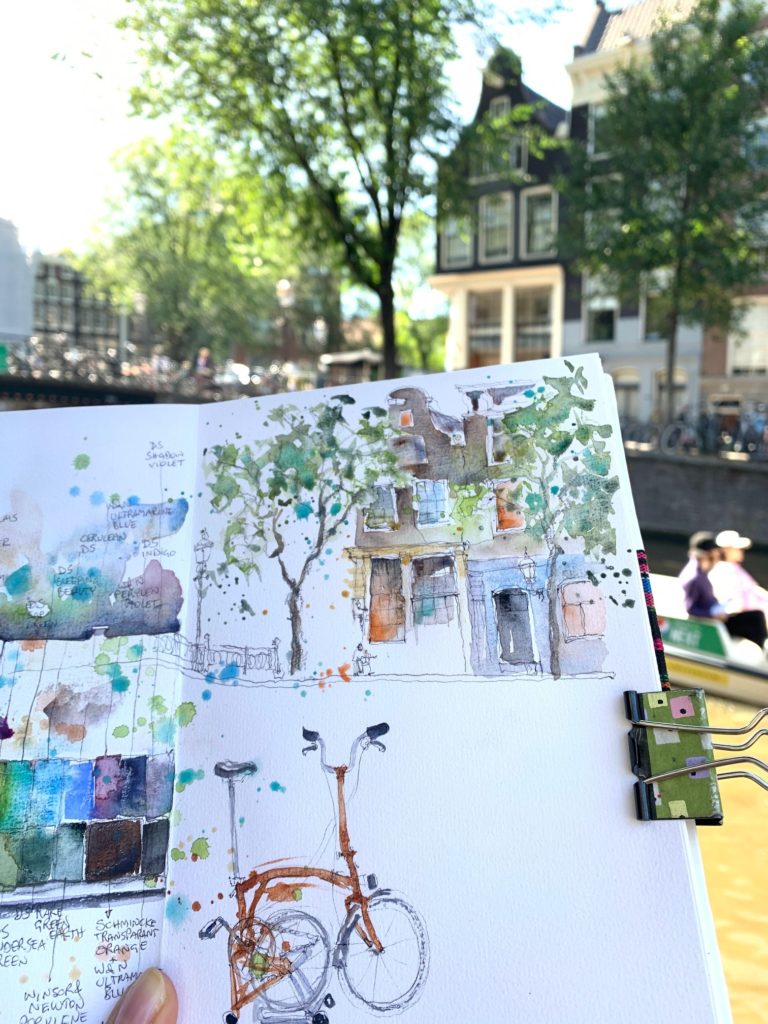

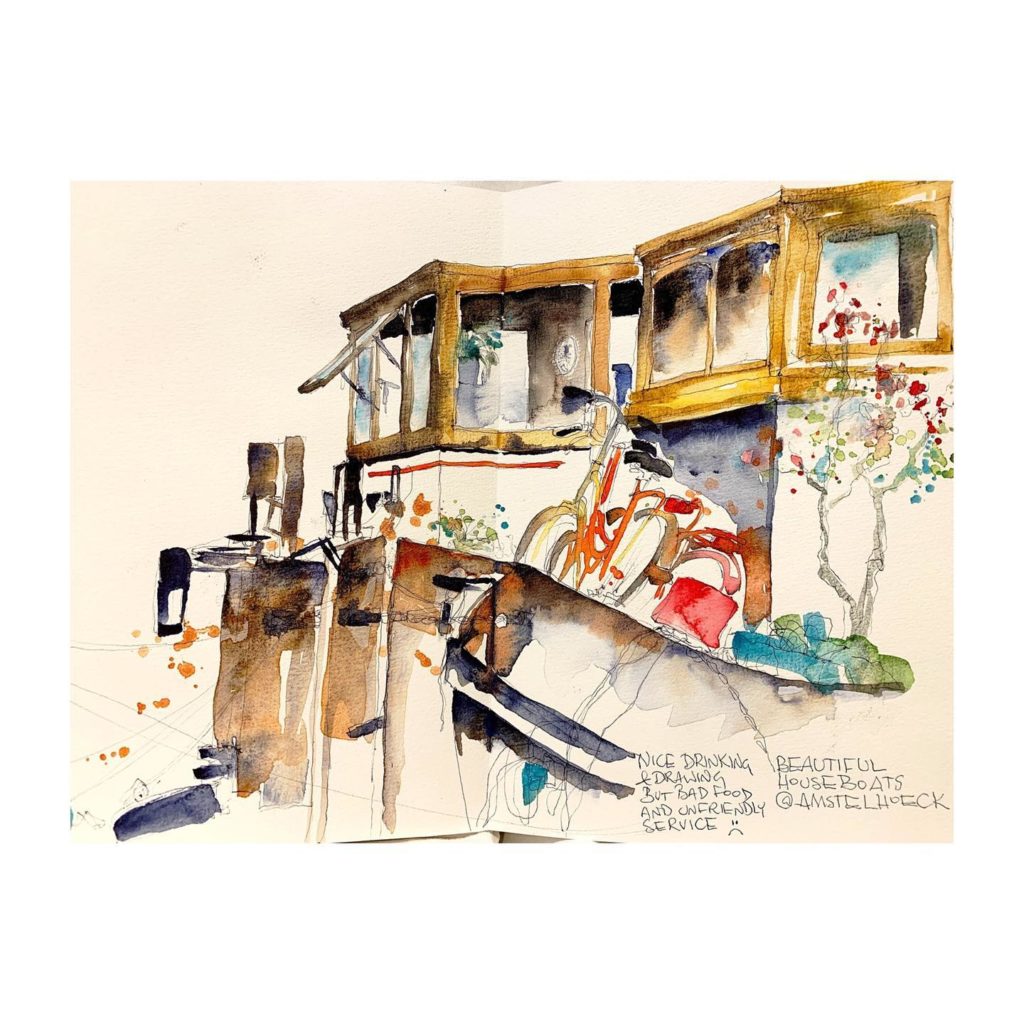
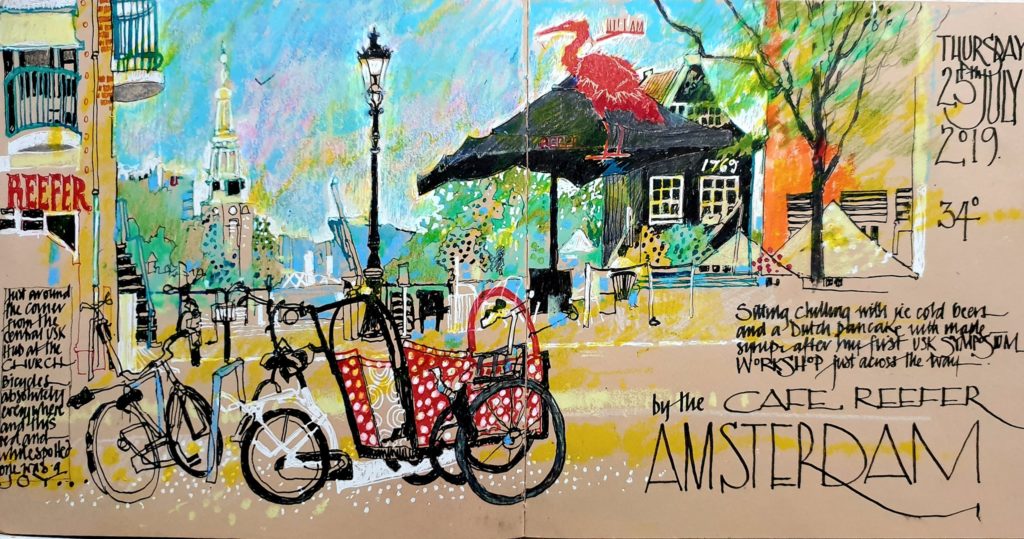
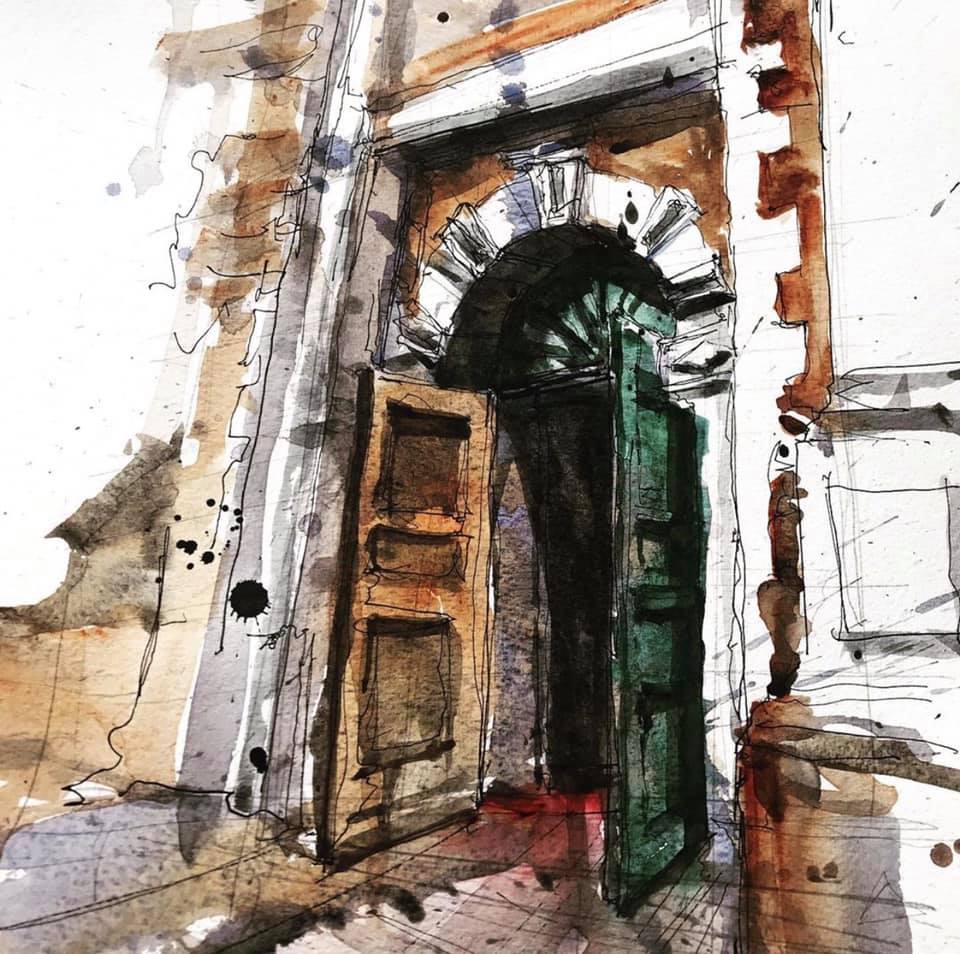

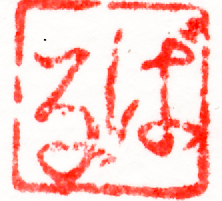
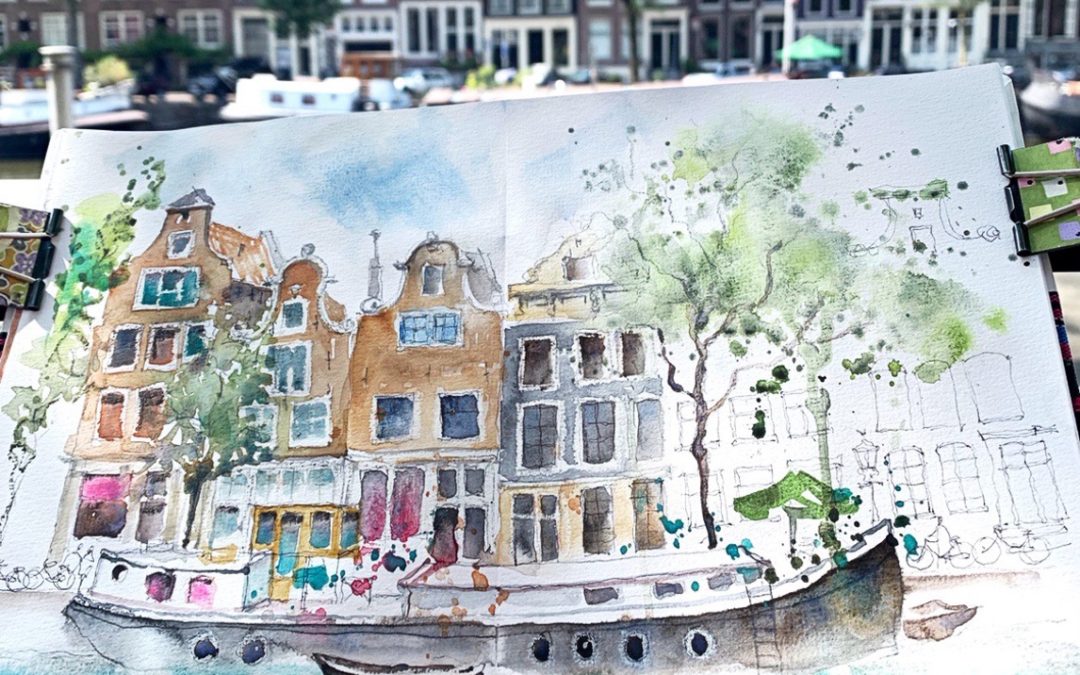
Merci Barbara de ce partage! Suis venue en libre donc c’ est intéressant de lire les approches de chacun !
Merci beaucoup ☺️
Wonderful report Barbara…..I love Paul Wang’s work…..thanks for summarising the main points of each tutor
Thank you so much Anne! I’ll write a blogpost about his workshop in Antwerp this Friday more specifically
Dear Barbara, in the video Paul Wang used a red plastc sheet, I wonder what is it for, please?
Bisous